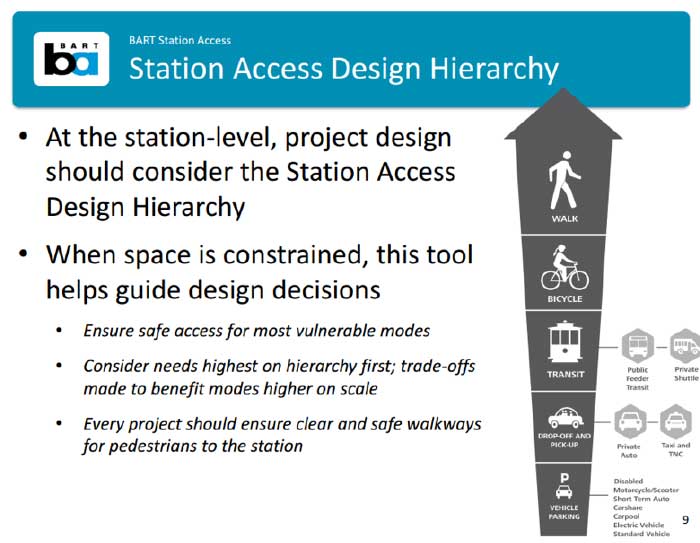As BART’s ridership has surged over the past five years, the system has developed a shortage of station parking. On a typical weekday, many of BART’s lots fill up before 7:30 AM. Among those who do not secure a space, some have found alternative ways to access BART, while others are resigned to driving to work. Amid BART’s parking crunch, though, an antiquated loophole allowing airport/long-term parking at stations further exacerbates this parking shortage.
BART’s Airport/Long Term Parking Program, launched in 2007, allows passengers to purchase long-term parking permits to park at BART stations for BART trips to/from airports and other long-term uses associated with BART trips. Passengers may purchase a long-term permit for $6-7 per day at any station with parking except West Oakland and Coliseum. The program was launched to encourage BART ridership to SFO, and has persisted as ridership has ballooned by about 30 percent over the past nine years. In comparison to airport parking fees that at least double or triple the cost, the program provides a relative deal for long-term car storage.
Despite its perks, the Airport/Long Term Parking Program doesn’t fit with BART’s station access policies and core mission. Parking at BART stations is generally not the highest and best use of land, and represents the lowest access priority at most BART Stations. However, where parking is provided, it’s in everyone’s best interest to ensure those spaces produce daily ridership, both from a financial perspective (maximizing farebox recovery) and from an environmental and congestion relief perspective (reducing vehicle miles traveled, or VMT).

BART’s Station Access Design Hierarchy includes short-term auto parking as its lowest priority, but does not mention long-term parking.
The Airport/Long Term Parking Program limits ridership and loses money. During a typical workweek, a BART parking space usually generates about ten trips, whereas a long-term airport parking permit would generate two trips. When comparing commute trips to San Francisco versus long-term parking for SFO, the Airport/Long Term Parking Program breaks about even at some stations, but loses a substantial amount of money elsewhere. Relative to the revenue generated by a daily park-and-ride space, long-term parking can lose as much as $18 per space over a week:



